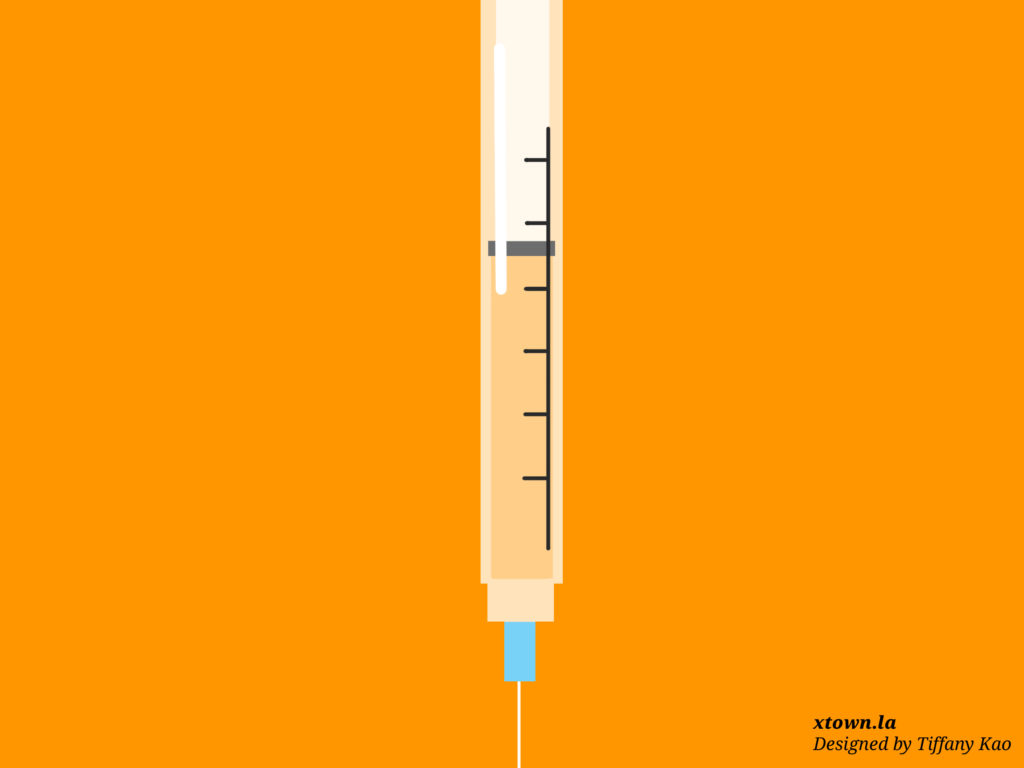The Crosstown Vaccine Tracker

It has been one week since vaccination verification requirements for local outdoor mega-events went into effect. Cases continue to decline in Los Angeles as inoculations rise, but past surges remind us that COVID-19 is still a serious threat and that the health landscape can shift quickly. Crosstown is keeping track of the latest coronavirus information to deliver the most important data about infections and vaccinations.
Take the shot
Weekly vaccination rates have jumped back up to the 200,000s. From Oct. 1-7, a total of 218,071 doses were dispensed to Los Angeles County residents, a 61% increase from the 135,000 administered a week prior. The recent total includes 62,648 second doses, according to the Los Angeles County Department of Public Health. One potential factor in the rise is the increasing number of employer mandates that workers get a shot, or find another job.
As of Oct. 7 (the most recent day for which data is available), 12,698,607 doses had gone into arms, and a total of 5,614,344 second doses had been administered.
![]()
So far, 78.3% of county residents 12 and older have received at least one dose, and 70% are considered fully protected. As a group, women continue to be inoculated at a slightly higher rate than men. According to the Department of Public Health, 80.4% of females 12 and up have received at least one shot, compared with 75.7% of men in that age group.
[Get COVID-19, crime and other stats about where you live with the Crosstown Neighborhood Newsletter]
Case by case
Average COVID-19 cases continue to drop, falling to levels not seen since mid-July. On Thursday, the seven-day average was 1,024, decreasing by 15.3% from Oct. 7-14. In the previous seven-day period, average cases fell by 10.4%.
The seven-day average of deaths has remained in the low 20s for the past month. On Thursday, this figure stood at 18, marking an 18.2% drop from one week prior.
COVID-19 hospitalizations in Los Angeles County, Sept. 1-Oct. 14
![]()
On Saturday, Oct. 9, daily hospitalizations dipped into the 600s for the first time since late July. On Thursday, 698 county residents were hospitalized with COVID-19, a 43% drop from the 1,224 people one month ago.
On Tuesday, the daily test positivity rate reached 0.8%; the figure hasn’t been this low since late June. On Thursday it jumped back up slightly to 1%.
As with previous weeks, the infection level on Los Angeles Unified School District campuses continues to be even lower. From Oct. 7-13, the district conducted 449,080 tests of students and staff, producing 487 positive results. That works out to a 0.11% positivity rate.
Racial disparities
As overall vaccinations increase and cases fall, racial disparities persist. As of Oct. 7, 81.7% of Asian Angelenos over the age of 12 had received at least one dose, making them the group with the most protection against the coronavirus. About 72.4% of white county residents had been vaccinated.
Meanwhile, the Latinx and Black populations consistently have lower vaccination rates. About 63% of Latinx residents have taken at least one shot in the arm, and 54.8% of Black residents have received at least one dose.
While vaccinations have increased for each ethnic group over the past few months, there has been a standing divide. On May 2, well before the Delta variant surge, the County reported that only 36.5% of Black residents had received one dose, compared with 40.2% of Latinx Angelenos, 59.1% of white residents and 66% of Asian people.
On Saturday, the Department of Public Health brought attention to the disparities, pointing out that in a nearly one-month period, from Aug. 29-Sept. 25, unvaccinated Black and Latinx residents experienced the highest case rates. Black Angelenos also have the highest hospitalization rate, which is 27% above the rate for Latinx residents, the next highest group.
How we did it: We analyzed coronavirus data related to new cases, deaths, hospitalization and vaccinations data provided by the Los Angeles County Department of Public Health, as well as data from the Los Angeles Unified School District.
Interested in our data? Check out the Crosstown coronavirus interactive map or email us at askus@xtown.la.






